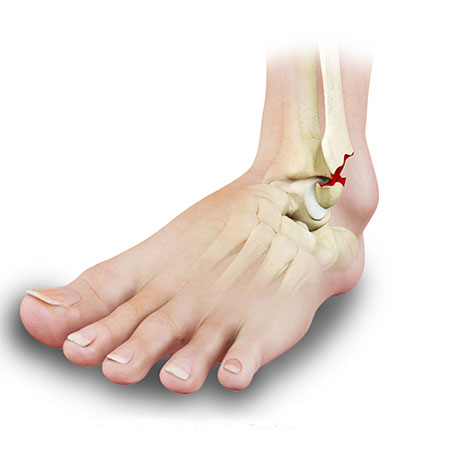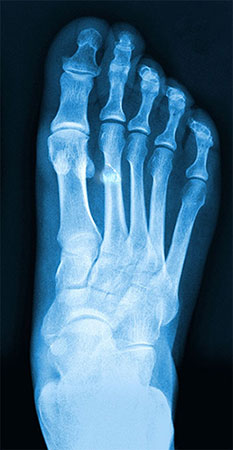Stress Fractures


Fracture in medical terms means the breaking or cracking of a bone. Typical fractures, or broken bones, occur from a violent force placed on the bone in an atypical, or unexpected, manner. Immediate pain and delayed swelling and bruising usually ensue. The episode that produces the fracture is always memorable and recognizable. Usually a trip to the emergency room or doctor is automatic.
Some fractures behave differently. "Stress fractures" by definition do not occur from a single defined event. They occur as a result of the repetitive trauma to the bone created by a recurrent activity. Often the recurrent activity is not separated by recuperative periods. Without periods for recuperation, the stress placed repetitively along the bone can create an inflammatory or injury reaction. This inflammatory reaction is usually heralded by pain and localized swelling. If the repetitive activity is not stopped at this point, then actual cracking of the bone can occur.
If the athlete presents to the doctor at the stage of inflammatory reaction, before actual cracking, then exam usually reveals localized tenderness and swelling. No definitive injury is usually identified. X-rays can be completely negative at this stage. Based on a history of repetitive stress and examination findings, the doctor usually has to presume that a stress fracture is eminent. If there is question, a bone scan or MRI can give further information. Treatment should be initiated to prevent potential true fracturing of the bone.
Treatment is actually very simple, although very frustrating for the athlete. The repetitive activity must be eliminated. The rule of thumb for stress fractures is that forced rest must be twice as long as the period of time it took to develop the stress reaction. Unfortunately, it can be near impossible to know exactly how long the stress had been developing. In addition to forced rest, non-steroidal anti-inflammatory medications, such as ibuprofen, help significantly with the pain secondary to the inflammatory nature of the problem. Usually, if caught early, no casting or bracing would be necessary. If caught late, after an actual crack in the bone is visible on x-ray, then casting and bracing will be required, just as any other fracture would require. In some cases, depending on the location of the fracture, surgery can be required.
Stress fractures heal, in most cases, at the same pace as most regular fractures, and in some cases quicker. Due to the inflammatory nature of the condition, pain can continue and is common even after the bone is well healed on x-ray, quite unlike typical fractures. Medications and rest should be continued until the inflammatory reaction resolves, otherwise recurrence of the stress fracture should be expected.
The take home message for the athlete is that recuperative time needs to be incorporated into your exercise regimen. At the first signs of persistent pain, more recuperation should be considered. If symptoms do not resolve quickly and completely, then prior to re-initiating the activity, medical attention should be sought.







